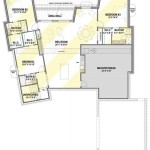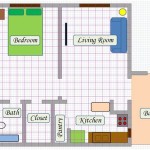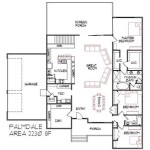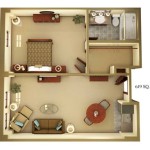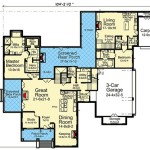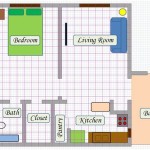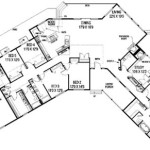Narrow Lot Craftsman Style House Plans: Optimizing Space and Style
Craftsman style homes, known for their emphasis on natural materials, handcrafted details, and functional design, are a popular choice for homeowners. However, traditional Craftsman designs often require larger lots, posing a challenge in urban areas or communities with limited land availability. Narrow lot Craftsman style house plans offer a solution by adapting the defining characteristics of the style to fit smaller footprints. These plans prioritize efficient space utilization while maintaining the architectural integrity and aesthetic appeal of the Craftsman movement.
The demand for narrow lot homes is increasing, driven by factors such as rising land costs, a desire for urban living, and a growing preference for low-maintenance lifestyles. Narrow lot Craftsman homes provide an opportunity to enjoy the charm and character of this architectural style without the need for extensive property. This article will explore the key features of narrow lot Craftsman style house plans, outlining how these designs effectively blend form and function to create comfortable and visually appealing living spaces.
Key Characteristics of Craftsman Style
Understanding the core elements of the Craftsman style is crucial to appreciating how these elements are adapted for narrow lot designs. Original Craftsman homes, popularized during the Arts and Crafts movement of the late 19th and early 20th centuries, emphasized simplicity, honesty, and the use of natural materials. Key features include:
Low-pitched rooflines: Typically gabled or hipped, with wide overhanging eaves and exposed rafters or brackets. These rooflines provide visual interest and offer protection from the elements.
Deep, covered front porches: Often supported by substantial square or tapered columns, providing a welcoming outdoor space and extending the living area.
Natural materials: Wood, stone, and brick are commonly used for exterior finishes, contributing to the style's warm and earthy aesthetic.
Exposed structural elements: Beams, rafters, and other structural components are often left visible, showcasing the craftsmanship and construction techniques.
Simple, open floor plans: Emphasizing functionality and connection between living spaces, rather than formal divisions.
Built-in cabinetry and furniture: Adding character and maximizing space utilization, reflecting the handcrafted ethos of the style.
Abundant windows: Often featuring divided lights and grilles, allowing natural light to flood the interior and create a connection with the outdoors.
These elements are foundational to the Craftsman aesthetic and are carefully considered and adapted in narrow lot designs to maintain the style's character while optimizing space.
Adapting Craftsman Style for Narrow Lots
Designing a Craftsman style home for a narrow lot requires careful planning and innovative approaches to space utilization. Architects and designers must prioritize efficiency without compromising the aesthetic principles that define the style. Several strategies are commonly employed to achieve this balance:
Vertical Expansion: Instead of sprawling horizontally, narrow lot Craftsman homes often utilize multiple stories to maximize living space. This allows for the inclusion of multiple bedrooms, bathrooms, and living areas within a compact footprint. The vertical emphasis is often softened by incorporating gabled roofs and dormers that echo the traditional Craftsman rooflines.
Rear-Loaded Garages or Carports: To avoid a garage dominating the front facade on a narrow lot, garages or carports are frequently located at the rear of the property, accessed via an alley or side driveway. This design choice allows the front of the house to maintain its architectural appeal and prioritize the street presence.
Strategic Window Placement: The careful placement of windows is crucial for maximizing natural light and ventilation in a narrow home. Tall, narrow windows, dormer windows, and strategically placed skylights can brighten interior spaces without compromising privacy on closely spaced lots. Clerestory windows, positioned high on walls, are another effective way to bring in light while maintaining privacy.
Open Floor Plans: Open floor plans remain a key feature of narrow lot Craftsman homes, promoting a sense of spaciousness and connection between living areas. The kitchen, living room, and dining area are often combined into one large, multi-functional space. This layout enhances the flow of traffic and allows natural light to penetrate deeper into the home.
Efficient Use of Outdoor Space: Maximizing outdoor living areas is essential, especially when lot size is limited. Small front porches, rear patios, or even compact balconies can provide valuable outdoor space for relaxation and entertainment. Designing these spaces as extensions of the interior living areas enhances the overall livability of the home.
Incorporating Built-ins and Storage Solutions: To maximize space efficiency, built-in cabinetry, shelving, and storage solutions are strategically integrated throughout the home. These features not only provide ample storage but also contribute to the handcrafted aesthetic of the Craftsman style. Nooks and alcoves can be transformed into functional storage spaces, minimizing clutter and maximizing usable square footage.
Attention to Detail: Even in a smaller home, attention to detail is paramount in capturing the essence of the Craftsman style. Exposed rafter tails, decorative brackets, and handcrafted trim work add character and visual interest. Choosing authentic materials and finishes, such as wood siding, stone accents, and divided-light windows, further enhances the architectural integrity of the design.
These adaptations allow homeowners to enjoy the benefits of Craftsman architecture while addressing the constraints of a narrow lot. The result is a well-designed, functional, and aesthetically pleasing home that maximizes space and minimizes environmental impact.
Advantages of Narrow Lot Craftsman Style House Plans
Choosing a narrow lot Craftsman style house plan offers several significant advantages, appealing to a wide range of homeowners.
Affordability: Narrow lots are typically less expensive than larger parcels of land, making homeownership more accessible. The reduced footprint of the house also translates to lower construction costs, as less materials and labor are required. This can be particularly attractive for first-time homebuyers or those seeking to downsize.
Reduced Maintenance: Smaller lots require less landscaping and maintenance, saving homeowners time and money. The emphasis on durable, low-maintenance materials in Craftsman design further reduces upkeep requirements. This allows homeowners to spend more time enjoying their homes and less time on chores.
Urban Living: Narrow lot developments are often located in urban areas, providing easy access to amenities such as shopping, dining, and entertainment. Living closer to city centers reduces commuting times and offers a more vibrant and walkable lifestyle. This is especially appealing to individuals and families who value convenience and access to cultural attractions.
Environmental Sustainability: Smaller homes generally have a smaller environmental footprint, consuming less energy and resources. The Craftsman style's emphasis on natural materials and energy-efficient design further contributes to sustainability. Narrow lot developments can also promote infill development, reducing urban sprawl and preserving green spaces.
Preservation of Architectural Character: Narrow lot Craftsman homes allow homeowners to enjoy the timeless appeal of this architectural style, even in areas where larger lots are unavailable or unaffordable. The careful adaptation of Craftsman design principles ensures that these homes retain the character and charm of traditional Craftsman architecture, enhancing the aesthetic appeal of the neighborhood.
Community Building: Narrow lot developments often foster a stronger sense of community, as homes are located closer together and shared amenities are more common. This can lead to increased social interaction and a more neighborly atmosphere. Front porches, a hallmark of the Craftsman style, further encourage social interaction and create a welcoming streetscape.
The advantages of narrow lot Craftsman style house plans extend beyond mere affordability and convenience. They offer a sustainable, stylish, and community-oriented housing option that appeals to a wide range of lifestyles.
In conclusion, narrow lot Craftsman style house plans provide a compelling solution for homeowners seeking to combine the charm and character of Craftsman architecture with the practicality of smaller lot sizes. These designs prioritize efficient space utilization, sustainable building practices, and a connection with the surrounding community, offering a compelling option for modern living.

Narrow Lot Craftsman House Plans

Charming Narrow Lot Craftsman Style House Plan 8833

Narrow Lot Craftsman House 4 Bedrms 5 Baths 3245 Sq Ft Plan 195 1195

Narrow Lot Craftsman House Plans

Simple Narrow Lot House Plans Houseplans Blog Com

Pin On Narrow Houses

Craftsman House Plans The Plan

Plan Of The Week Craftsman Gem For Narrow Lots Drummond House Plans Blog

2 Story House Plans For Narrow Lots Blog Builderhouseplans Com

Plan 001h 0137 The House

